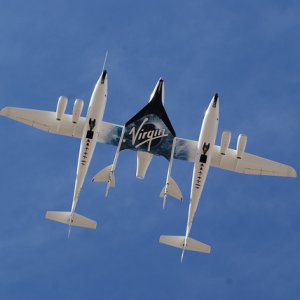
Aerospace, Automotive Companies Design Supersonic Airplane
 By Alessa Flores | Senior Journalist and Industry Analyst -
Thu, 08/06/2020 - 11:12
By Alessa Flores | Senior Journalist and Industry Analyst -
Thu, 08/06/2020 - 11:12
Virgin Galactic and Rolls Royce announced their collaboration to design supersonic aircraft, according to Forbes Mexico. It should be noted that the aerospace company, Virgin Galactic, for more than 10 years had already set the goal of developing reusable spaceships that were capable of sending people to low orbit destinations. For his part, Rolls Royce will be in charge of designing the engine to drive this supersonic jet at high speed. Until now, the company has told Virgin Galactic's press release that it has completed the design review phase with NASA and is in the process of working with the Federal Aviation Administration’s (FAA) to create a framework that certifies its ships.
Although space tourism is Virgin Galactic's bid, the company has also announced that it is beginning plans to develop an aircraft that can fly at 60,000ft at three times the speed of sound, connecting New York to London in two hours or Sydney to London in four hours. Currently, it takes up to 19 hours to connect both places by plane, Forbes explains.
Now let’s jump into The Week in Aerospace!
Embraer Delays E175-E2 Until 2023
Brazilian planemaker Embraer reported losses for 2Q20 as it grapples with the effects of the COVID-19 outbreak in the global aviation industry. The company also delayed the launch of its E175-E2 until 2023 due to sharp reduction in demand for air travel. In addition, in its 2Q20 report, the third largest planemaker in the world, Embraer, reported losses for its commercial aviation business unit of US$91.1 million. Moreover, the company faced further credit losses due to COVID-19 amounting to US$16.1 million, which together with other financial hurdles left the company with a net loss of US$198.8 million for the period.
The COVID-19 crisis posed a further setback to Embraer’s commercial division, which now announced a delay on its E175-E2 program that would upgrade the first generation of E175 jets, a family of narrow-body, twin-engine aircraft popular in the regional airline segment. Embraer moved the E175-E2 timeline until 2023 but believes that it “will still be available with more than adequate time to enter into service in the commercial aviation market to meet market demand for the jet.”
Incora to Invest US$1.5 Million in Chihuahua
Global supply chain management operator for the aerospace industry Incora, created after the acquisition of Wesco Aircraft by an affiliate of Platinum Energy, will invest US$1.5 million in Chihuahua. Last month, French engine giant Safran announced the construction of a new plant in Chihuahua, which would generate 800 jobs. On Saturday, the state governor Javier Corral and the Ambassador to the US in Mexico Christopher Landau announced that aerospace supply chain operator Incora will follow suit with a US$1.5 million investment in the state, which would generate 240 jobs in its first stage. While Wesco Aircraft already had offices in Chihuahua, Incora’s new investment will allow the company to broaden its supply chain management capabilities in the region.
SpaceX Makes History With Successful Return of Endeavor
On Sunday, the SpaceX Crew Dragon “Endeavor” safely brought back to Earth two astronauts from the International Space Station, closing a chapter in NASA’s Commercial Crew Program, which aims to return space flight to the US. This successful mission is also a step forward toward SpaceX’s goal of making spaceflight available to the general public.
The Crew Dragon spacecraft made a water landing yesterday afternoon on the Gulf of Mexico, marking the end of a two-month long mission that took US astronauts Bob Behnken and Doug Hurley to the International Space Station for research purposes. On March 30, SpaceX’s Crew Dragon took off from Launch Complex 39A (LC-39A) at NASA’s Kennedy Space Center in Florida and arrived the following day at the International Space Station. The Crew Dragon is a free-flying spacecraft designed by SpaceX to carry up to seven people or cargo to orbiting destinations and to return them to Earth. The successful launch performed by the Falcon 9, a two-stage reusable rocket designed by SpaceX, made history by making the company the first private business to successfully deliver a human crew to space. Later on, SpaceX accomplished another milestone by being the first US spacecraft to autonomously docked at the ISS, followed by another accomplishment after safely returning the astronauts to Earth.
















